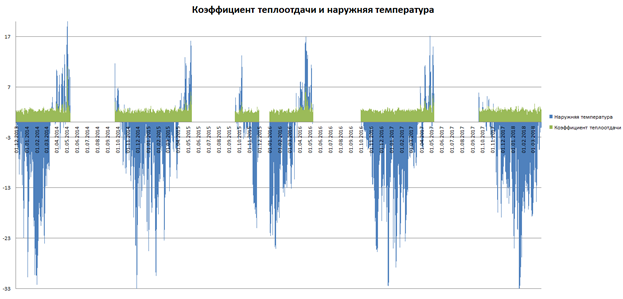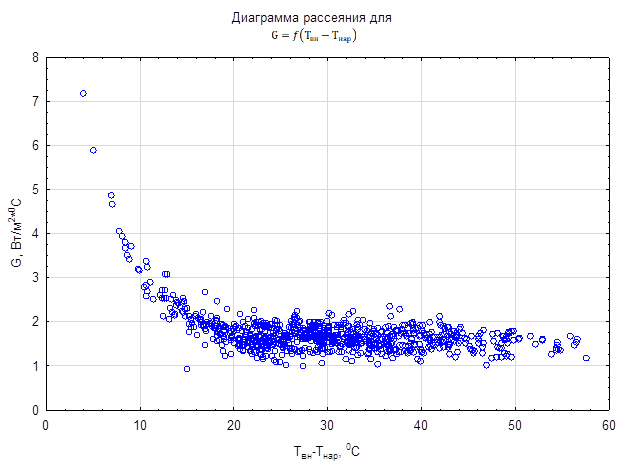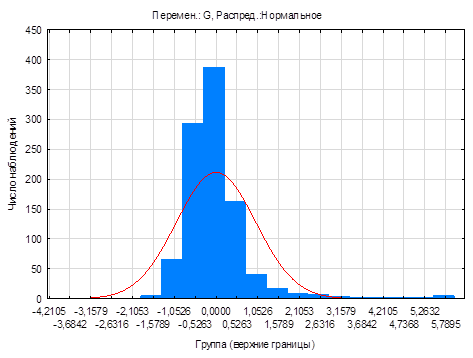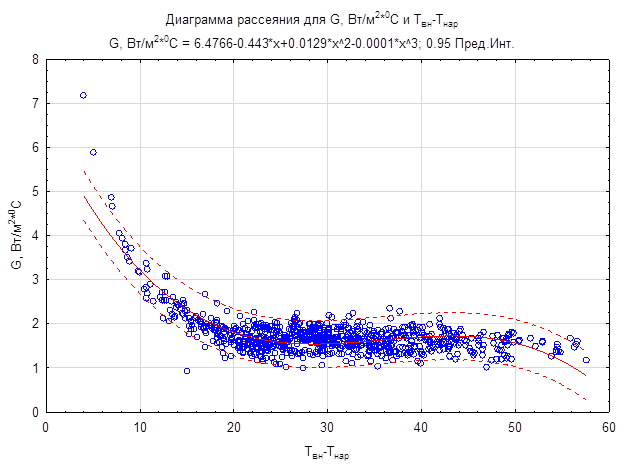Several years ago, I thought that my work had become a craft. In order to diversify the gray everyday life, to increase my cost as a specialist, I entered the magistracy and immediately became a point-blank question - how, after 15 years after graduating from the first technical college, to write an FQP that would not be ashamed of?
Introduction
It so happened that almost all 15 years from the moment I became an engineer, I was engaged in the maintenance of heat meters in the basements of apartment buildings (MKD). The data has accumulated enough to be boldly called big data.
I will not describe in detail the physics of the process of heat loss of buildings and structures, I will only write some assumptions that I had to make:
Temperature inside the house. Big engineering problem. Where to measure correctly? how many points are in what places? I decided to enter "hospital average" and took that as 24 degrees.
Outside temperature. Data from Roshydromet can be obtained only for money. It is she who is operated by energy supplying organizations when they carry out all their calculations. In our city, it turned out that there is an optical weather laboratory , which measures the same, but gives data for science free of charge. We wrote a letter with the scientific adviser - received the data.
Measurement frequency. I didn't have to think about it, we decided that the daily archive of the heat meter would be enough. A residential building is a fairly stationary thing, it heats up slowly, cools slowly.
The data must be cleared. It so happens that the heat meter does not work. Sometimes this is due to its malfunction, sometimes - to setup modes. For modeling, it is better to use valid data - for example, when it is allowed for commercial settlement.
Data is limited to the period from early December 2013 to March 27, 2017. As is.
Data processing in Statistica. This task was assigned to me by a scientific instructor, I acquired an academic license.
A bit of theory
From world practice [1], we single out two measurement methods suitable for the task at hand:
· . .
· - . , .
: .
, – . , , , , . [2] , 1 [3]
G – , /2*⁰;
Q – , ;
– , 24⁰;
– , ⁰;
( -) – , ⁰;
S – , 2;
t – , 24 .
, , 2 :
, .
, 830 - : 1965 . – , , .
1 . , , 0⁰.

2015-2016 . , .
2 [4] – Statistica, .

, , . Statistica . - () . () , "" ( ) . ( ) (, ).
G :

. , :

.
, "" , .
. .
.
1. , . . / . . , . . // . – 2015. – № 8. – . 24–30.
2. Mukashev A., Dynamic method of the heating devices efficiency measurement // Mukashev A., Pugovkin A., Kuprekov S., Petrova N.,Abramchuk S, International Scientific Conference «Environmental and Climate Technologies», CONECT–2017,Riga.
3. .. / .. , .. , .. , .. , XIV - « », : . . - . , 2018, 2, .302-305.
4. .. Statistica : ; . – : - , 2011. – 163 .